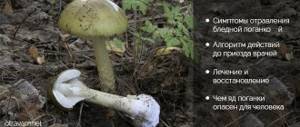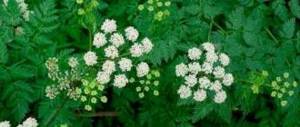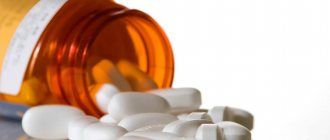Household poisoning with White, among other intoxications, cannot be called frequent, but such cases do occur. And this means that it is better to know about them in advance and take all measures to prevent such a situation.
Whiteness is an antiseptic, disinfectant, bleach, stain remover, strong oxidizing agent with a pungent odor. This product contains alkaline components, surfactants and the main components - sodium hypochlorite and active chlorine (up to 95.2% of the total mass).
In everyday life, Whiteness is used for various purposes:
- for cleaning dishes or tiles,
- for removing stains,
- as a bleaching agent
- for disinfection during cleaning.
The popularity of Whiteness is explained by its significant advantages: versatility, low cost, economy and efficiency. Among the disadvantages is the likelihood of poisoning with this drug.
According to the International Classification of Diseases (ICD 10), Whiteness poisoning corresponds to code T 54.9.
Whiteness: composition and areas of application
Any housewife knows what whiteness is. This product is quite cheap, but at the same time it has a wide spectrum of action. It is used both for bleaching fabrics during washing and for removing stains. Whiteness is used to disinfect plumbing fixtures (in particular toilets), it is used to clean tiles, dishes, and so on.
In home life, whiteness can be used almost everywhere. And this product comes first not only because of its low cost, but also because of its powerful antimicrobial effect. That is, whiteness today is an excellent assistant for housewives, coping with microbes of different types and types. With whiteness it becomes easy to keep your home or apartment completely clean and safe from infections.
The chemical composition of this product is as follows: a powerful oxidizing agent, sodium hypochlorite containing active chlorine.
Video
What happens if you drink white? Watch a video about the dangerous effects of chlorine-containing products.
Whiteness is a fairly popular cleaning product among many housewives. It does an excellent job of removing dirt and cleans surfaces of both dirt and bacteria. In addition, the product allows you to whiten bed linen and keep your bathroom clean. Whiteness is inexpensive, easy to use - why not a godsend for housewives?
Doctors say that the well-known universal remedy is quite dangerous. You need to work with it very carefully. Most people who use bleach in the home refer to it as chlorine. This is explained by the pronounced specific smell. In fact, sodium hypochlorite can be seen in the chemical composition of the product. This is the active element of whiteness, which contains chlorine in a volume of 95% of the total mass. For this reason, we can safely say that the familiar remedy is chlorine - a substance that can lead to severe poisoning if safety rules are not followed.
It is important to understand that even a few breaths of chlorine vapor can lead to dire consequences for the human body. An adult may not feel any changes in the functioning of the body, but a small child will only need to sniff the cap of a bottle of white for the first signs of poisoning to appear. It is worth noting that adults most often do not take this issue seriously and do not follow basic rules. In such cases, the product gets on the skin, in the eyes, and may enter the esophagus in small quantities. Such actions require immediate medical examination.
Ways of whiteness poisoning
Whiteness poisoning can occur in different ways. Chlorine vapors that penetrate through the human respiratory system during cleaning of an apartment (house) are toxic. It is also very dangerous for white to get on mucous membranes. This is caused by careless handling of the product.
Sodium fluoride in toothpaste: benefits and harms
And, of course, whiteness is most dangerous when it enters the body through the digestive tract. By the way, children are not stopped even by the rather sharp and unpleasant smell of chlorine in whiteness when their interest in this liquid “awakens”.
The penetration of whiteness through the digestive tract into the stomach and intestines leads to a real tragedy, the severity of which will directly depend on how quickly and efficiently first medical aid is provided to the victim.
In addition to an apartment or house, you can get white poisoning in public places where this product is used for disinfection. And intoxication occurs in this case due to non-compliance with the rules for using chlorine-containing products.
Consequences
After moderate poisoning, the matter is usually limited to the development of various respiratory diseases (if the victim was poisoned by Whiteness vapors):
- bronchitis,
- tracheitis, pharyngitis,
- pneumonia, pneumosclerosis,
- emphysema,
- pulmonary failure.
If you fail to immediately rinse your eyes, after White gets into them, serious pathological changes in the conjunctiva will begin, and partial loss of vision is also possible.
Ingestion of Whiteness by young children is most often fatal. In adults, in the worst case, there are consequences such as irreversible damage to the stomach and esophagus, which often becomes the reason for their amputation due to the inability to do anything.
Clinical picture
Symptoms of white intoxication depend on the location of the lesion. Most often the lesion is localized in the human respiratory system. This happens when you inhale chloride fumes. The clinical picture will be as follows:
- A burning sensation in the throat;
- Hoarseness of voice;
- Sharp and painful cough;
- Dryness and burning of mucous membranes;
- Headache.
Chlorine, or rather its evaporation, also has a negative effect on the mucous membranes of the eyes. In this case, the victim will complain of soreness in the eyes and severe itching. And the doctor will note inflammation of the conjunctiva and excessive lacrimation. In this case, the burn is diagnosed as chemical, and partial loss of vision, or even complete blindness, is possible.
If whiteness gets on exposed skin, the clinical picture will be as follows:
- Irritation
- Inflammation;
- Burn blisters;
- Dermatitis.
If you accidentally ingest an undiluted solution of bleach, the most severe poisoning occurs with intensely progressive symptoms that are extremely difficult to treat.
Just one sip of whiteness brings incredibly painful and sometimes irreversible complications. First of all, this remedy causes severe burns along the entire path of digestion, starting with the oral cavity. Further, the clinical picture develops quickly and looks like this:
Acute poisoning
- Pain in the mouth caused by the fact that whiteness affects deeply all tissues, including nerve endings.
- The pain also increases intensely in the esophagus, in the epigastric region. This means that bleach destroys organic tissues without the possibility of their restoration.
- Vomiting blood. It usually begins within a few minutes after the poison is swallowed and enters the stomach. It doesn't make the situation any easier. And with a large volume of chlorine, intestinal and gastric bleeding occurs.
- Since a burn also occurs in the throat, signs of suffocation and swelling begin to appear, the voice becomes hoarse, and the glottis spasms.
- Since chlorine affects the central nervous system, this affects the psycho-emotional state of the victim: mental and motor excitation develops.
- Damage to the genitourinary system manifests itself through darkening of the urine, its acquisition of a brown tint, and kidney dysfunction.
- As a general sign of intoxication, body temperature rises.
In case of white poisoning, qualified medical assistance must be immediate and mandatory. The outcome of poisoning directly depends on the speed of doctors’ actions.
Treatment
After poisoning with a chlorine-containing agent, you should not hope that your health will stabilize on its own. Timely assistance provided by specialists can not only improve the patient’s well-being, but also save his life.
Therapy is carried out in specialized medical institutions. Depending on the severity and method of poisoning, doctors prescribe individual treatment:
- introduction of drugs that stabilize heart function;
- IVs supporting lung function;
- gastric lavage with a probe;
- intravenous administration of medication to prevent further development of poisoning;
- removal of the stomach, if there is a severe burn and surgical intervention is unavoidable;
- infusion therapy;
- administration of the antidote Sodium thiosulfate.
Poisoning with household chemicals requires urgent hospitalization, as the victim may experience negative consequences. The most common outcome is:
- pneumonia;
- emphysema;
- partial and complete loss of vision;
- irreversible disorders of the digestive system;
- pharyngitis;
- bronchitis;
- decompensated stage of cor pulmonale.
The duration of treatment depends on the complexity of the poisoning, the condition of the victim and individual indicators.
First aid
First aid techniques for bleach poisoning are as follows:
- In case of inhalation poisoning, it is necessary to leave the room where the chlorine (bleach solution) evaporated. It is necessary to ventilate the room thoroughly.
- Then be sure to thoroughly rinse your eyes, face, nose, mouth with running water, and gargle.
- Milk and fresh egg whites are an excellent remedy for whiteness intoxication.
- Soda inhalation.
- Oxygen cushion.
Release forms
One of the main properties of sodium hypochlorite is its good solubility in water. This makes it possible to produce “Whiteness” in liquid form, as well as in the form of gel and tablets. The liquid has been known to everyone since childhood as the main bleaching and disinfectant of our grandmothers. Gel and tablets appeared relatively recently as more convenient for application and dosage.
"Whiteness" gel
The product in gel form is sold in plastic bottles. This consistency helps the active substance stay on the surface being treated longer and not drip off. Accordingly, the gel provides the best results when cleaning plumbing fixtures. The composition of “Belizna-gel” is complex, it includes additional components:
- surface active detergents;
- thickeners;
- rust solvents;
- caustic soda;
- perfume fragrances.
The approximate shelf life of the gel is about a year, and the container must always be firmly closed, otherwise the gel will begin to lose its basic properties. In case of freezing, after defrosting the product retains its properties, you just need to shake it.
"Whiteness" in tablets
The product is also available in the form of large white tablets that must be dissolved in water.
The proportions depend on the purpose of use. For washing and disinfecting the floor, 1 tablet per 10 liters of water will be enough, and for bleaching laundry – 1-3 tablets per 1 liter.
In order for them to show their properties to the maximum, it is necessary to monitor the expiration date.
Health care
Medical care for white poisoning consists of symptomatic therapy. Analgesics are used (for severe headaches). To soften the mucous membranes and for dry throat, special medications are given.
If chlorine gets into the eyes, instill a 2% solution of novocaine and Albucid (after 15 minutes).
For external burns of the skin, acetic acid is used as a lotion.
If whiteness enters the stomach internally, rinsing is carried out through a probe, artificial vomiting is induced, and an antidote is administered - sodium thiosulfate.
Blood counts are monitored. And if changes are detected, appropriate therapy is prescribed.
Styrene poisoning
In the case of severe internal burns, surgical intervention cannot be ruled out to restore the patency of the esophagus, the disruption of which causes burn scars.
Treatment
If chlorine poisoning occurs, you cannot hope that the situation will improve on its own after a few days. In some cases, a person’s life depends on timely access to a doctor.
Specialized treatment is carried out in a medical facility and consists of the following:
- gastric lavage using a tube;
- infusion maintenance therapy;
- stimulation of the heart;
- restoration of respiratory function;
- identification and elimination of damage to the organs of vision;
- amputation of the stomach or esophagus in case of severe organ damage.
Important: if treatment is provided as soon as possible, the risk of developing complications in the future is significantly reduced.
The most common consequences of sodium hypochlorite poisoning are various respiratory diseases, blurred vision and irreversible dysfunction of the gastrointestinal tract.
Prevention
To avoid white poisoning, it is necessary, first of all, to follow all safety rules for working with it and storage rules.
White must be stored completely out of reach of children, in a cool and dark place.
When working with white, you should always wear rubber gloves and a respirator. Do not allow chlorine to come into contact with the skin or mucous membranes. In case of accidental contact with white, it is necessary to immediately rinse these areas with warm running water.
When using white to disinfect the toilet and other surfaces in the house, rinse the product thoroughly with water so that no one in the household, including children, gets poisoned later.
Obvious symptoms
Whitewash poisoning has different symptoms, depending on whether it is chronic or acute.
Chronic poisoning occurs when a person is forced to regularly come into contact with a chlorine-containing substance. These include employees of cleaning companies who carry out daily professional cleaning. Fanatical housewives who strive for perfect cleanliness in their home also fall into this group.
Cleaning the water filter
Chlorination in a well must be carried out in the correct proportions and strictly following the instructions for use.
- Pump out the water or scoop it out (at shallow depths).
- Clean the walls with a stiff brush.
- Prepare a solution: 600 ml of “Whiteness” per 10 liters of water.
- Treat the walls of the well and the upper superstructure along with the lid. This is best done with a spray bottle.
- After filling the well with water, the same solution is poured into it at the rate of 1 liter per 1 ring.
- Stir the water by lowering and raising the bucket.
- Cover the well head with polyethylene to prevent chlorine evaporation and leave for 6-10 hours.
- Pump out the water until the smell of chlorine disappears.
We suggest you familiarize yourself with red spots appearing on the body and itching like mosquito bites
Disinfection of filters in the “Reverse Osmosis” cleaning system with “White” is carried out when replacing cartridges.
- After removing the cartridges and reverse osmosis membrane, you need to screw in the second and third flasks in the direction of water flow.
- The tube from the purified water tap is connected to the tee (instead of the carbon filter).
- 10 ml of “Belizna” is poured into the first flask and water is added, after which the flask is twisted.
- After 15-20 minutes, you need to open the water supply tap and the purified water tap.
- When the smell of chlorine is clearly audible from the purified water tap, close the taps and wait several hours.
- After this, the taps are opened again and water flows until the chlorine is completely washed out.
After this treatment, the filter is completely disinfected, you can insert the membrane and a new carbon filter.
How to avoid accidentally ruining clothes when bleaching
As already mentioned, most bleaching agents can ruin the structure of the fabric. And if you do not take into account the recommended amount of funds or exposure time, then most likely this cannot be avoided. There are also a few more nuances that must also be observed when bleaching.
Do not use chemical bleaches if there are rust stains on your clothes. Since when they dissolve, all clothes will turn yellow and deteriorate.
You should not leave clothes that have metal fittings on them to soak for a long time. For such things it is necessary to use water no higher than 40 degrees.
It is best to choose plastic containers for carrying out procedures to return things to white. Metal and enamel cookware often has minor damage, which can cause unwanted reactions when exposed to chemicals.
Before carrying out the procedure, be sure to make sure that this item can be bleached. The label usually contains this information. The icon indicating that this should not be done looks like a triangle crossed out by two lines. This is especially true for delicate thin fabrics.
This drug is the most famous and popular remedy against stains, and also as a bleacher for things, which our grandmothers used. In this article we will talk about whiteness gel, the instructions for use of which are not complicated and can be mastered by absolutely every person.
To answer the question of what this bleaching agent is, as well as what its use gives, you must first analyze the description and composition of the whiteness. She owes her super abilities to disinfect things to sodium hypochlorite.
, which is part of it.
Thanks to this substance, whiteness for disinfection has been recognized as one of the best means for quite a long time. In addition, using white against white marks and greasy stains in the bathroom greatly simplifies the task. Whiteness ,
the composition of which, like its instructions, is not anything complicated,
is used by almost any housewife.
Getting inside
Poisoning by white vapors is possible when laundry is boiled for a long time, and less often when cleaning indoors. High concentrations of chlorine in the air irritate the mucous membranes of the upper respiratory tract, eyes and nose. There will be no severe poisoning from inhalation of sodium hypochloride at home.
Symptoms of irritation of the larynx, trachea and bronchi are sore throat, sneezing, hoarseness, coughing, sometimes so strong that transient oxygen starvation of the brain develops. Headaches and dizziness occur. With hypersensitivity to chlorine, spasm and allergic swelling of the larynx is possible, which can lead to death. White vapors, irritating the mucous membrane of the eyes, can cause redness of the sclera and conjunctivitis.
First aid to the victim is to remove him from the zone of influence of sodium hypochlorite and ventilate the room. It is necessary to remove the remaining irritant from the mucous membranes: rinse the eyes with running water, gargle. In case of severe poisoning, soda inhalations are indicated. The simplest method is to breathe soda vapor over a hot alkaline solution. In the most severe cases, you should immediately consult a doctor.
Aquarium cleaning
The chlorine contained in White kills harmful substances, fights organic deposits and removes dirt. The mixture can be used to clean the aquarium walls, soil and water decor.
- Cleaning the aquarium. Apply white to the sponge and wash the walls of the aquarium well. The mixture is washed off with running water.
- Cleaning soil and decor. Use a solution based on Whiteness (1 liter per 12 liters of water). Stones, artificial plants, soil and other decor are poured with the mixture and left for a day. Afterwards rinse well with clean water. Stones and large decor are wiped with a soft cloth.
Whiteness is not used to clean painted stones. Chlorine can dissolve the dye.
Against insects.
Every self-respecting summer resident has a special container into which water is pumped for irrigation. There it warms up, thereby creating favorable conditions for nesting of various insects, and in particular attracting mosquitoes, which lay their larvae there.
To destroy them and not harm the plants that will be watered with this water, add our chlorine bleach to the container at the rate of one tablespoon per 100 liters.
Attention! If you use a small body of water for irrigation, for example a man-made pond, you absolutely cannot add Whiteness there.










